Illustrations by Singapore-based artist Isabella Brown. A portfolio of her work can be found here.
On March 22, a teenage boy was tending dry-season rice fields with his father on a quiet Sunday in the southern province of Savannakhet in Laos when a bomb concealed beneath vegetation exploded. The 15-year-old did not survive the blast. Just days earlier, in a nearby district of Savannakhet, three men suffered the same fate after venturing into the forest in the heat of the afternoon in search of wild plants and food. The men died almost instantly, succumbing to devastating wounds inflicted by hidden ordnance.
They are among the latest victims of the 1964-1973 US bombing campaign, when at the height of the Vietnam War, more ordnance was dropped on Laos in the space of nine years than during the entirety of World War II in Europe. The onslaught resulted in over 30,000 casualties.
Yet since the last bomb fell from the skies, another 20,000, mostly civilians, have been killed or maimed by unexploded bombs left behind.
The number of blasts each year is falling, and with the help of modern medicine a higher proportion of victims are surviving. Out of 1,660 casualties since 1996, more than two-thirds were wounded, but lived. That presents a new challenge to modern-day Laos: how to provide the long-term care and assistance needed to help victims rebuild their lives.
Laos is thought to have 15,000 living survivors of accidents involving war remnants, with 13,500 having lost a limb since the air attacks ended. In the early decades after the war, amputees often fashioned their own artificial limb from wood, rubber and metal – even making use of discarded bomb casings. Although a badge of resilience, makeshift limbs might soon become a relic of the past.
The first US bombs were dropped [on Laos] in December 1964, beginning a nine-year onslaught that constituted the most extensive aerial bombing campaign in history
“Prosthetics and assistive devices help victims move more freely, enable them to enjoy their daily lives and go back to participating in community activities,” Paphavady Keomeuangsene told the Globe. Paphavady works for COPE, a non-profit organization based in Vientiane, that works alongside the Lao Ministry of Health to rehabilitate Laotians with physical disabilities.
COPE provides over 1,200 prosthetic and orthotic devices – designed to either replace or support a damaged limb – every year, with around one-third of the recipients having survived an accident related to unexploded ordnance.
Most accidents occur in Savannakhet, the site of the two fatal explosions in March, and Xieng Khouang further north. Both provinces are heavily-contaminated with unexploded ordnance and sit along what was once the Ho Chi Minh trail. In the mid-1960s, then-US president Lyndon Johnson grew concerned as American ground forces failed to halt the southward advance of the North Vietnamese Army down the trail, who had been using the jungles of neighbouring Laos, officially a neutral country, as an overland supply route to avoid US air power.
In response, the US began striking targets on the Laotian side of the border, aiming to weaken the country’s Pathet Lao communist group and prevent North Vietnamese troops using the country to smuggle weapons and equipment to aid the war effort against the US-backed regime in Saigon. The raids were made all-the-more urgent from the US’ perspective by the escalating Cold War battle against the Soviet Union, in which American leaders saw landlocked Laos as a vital buffer nation separating communist states, like China and North Vietnam, from Western allies in the region.
The first US bombs were dropped in December 1964, beginning a nine-year onslaught that constituted the most extensive aerial bombing campaign in history. US aircraft flew 580,000 sorties and dropped two million tonnes of ordnance on Laos, most in the form of cluster munitions. Each cluster bomb casing contained hundreds of smaller bombs – known in Laos as ‘bombies’ – which were released mid-air and dispersed over a wide area to cause maximum indiscriminate spatial carnage.
An estimated 260 million bombies were released in total, of which around 80 million failed to detonate on impact and now litter the countryside in 14 of Laos’ 17 provinces. More than 25% of villages are contaminated with bombies, each roughly the size of a tennis ball – but with a 30-metre killing radius.
Rivers, streams, forest paths, rice paddies, roads and settlements are all home to a hidden killer, laying silent but primed and ready to detonate five decades after their arrival from above.
In some areas of the country, every step brings a risk of death or life-changing injury.
Mr Mai, a 27-year-old construction worker from Xieng Khouang province, was digging at the roadside in 2015 when a device exploded, inflicting severe injuries which led to the loss of his arm.
“I’ve always been careful about unexploded ordnance, [but] one day, my arm was suddenly snatched away from me,” he told COPE after a mobile clinic team visited his village in June 2016.
Medical staff assessed his injuries and referred him to a regional rehabilitation centre, and a year after his accident, Mr Mai was fitted with a prosthetic arm, with the costs covered by COPE. After receiving the prosthetic, he said he had regained hope of being able to resume work and raise animals to support his children’s education.
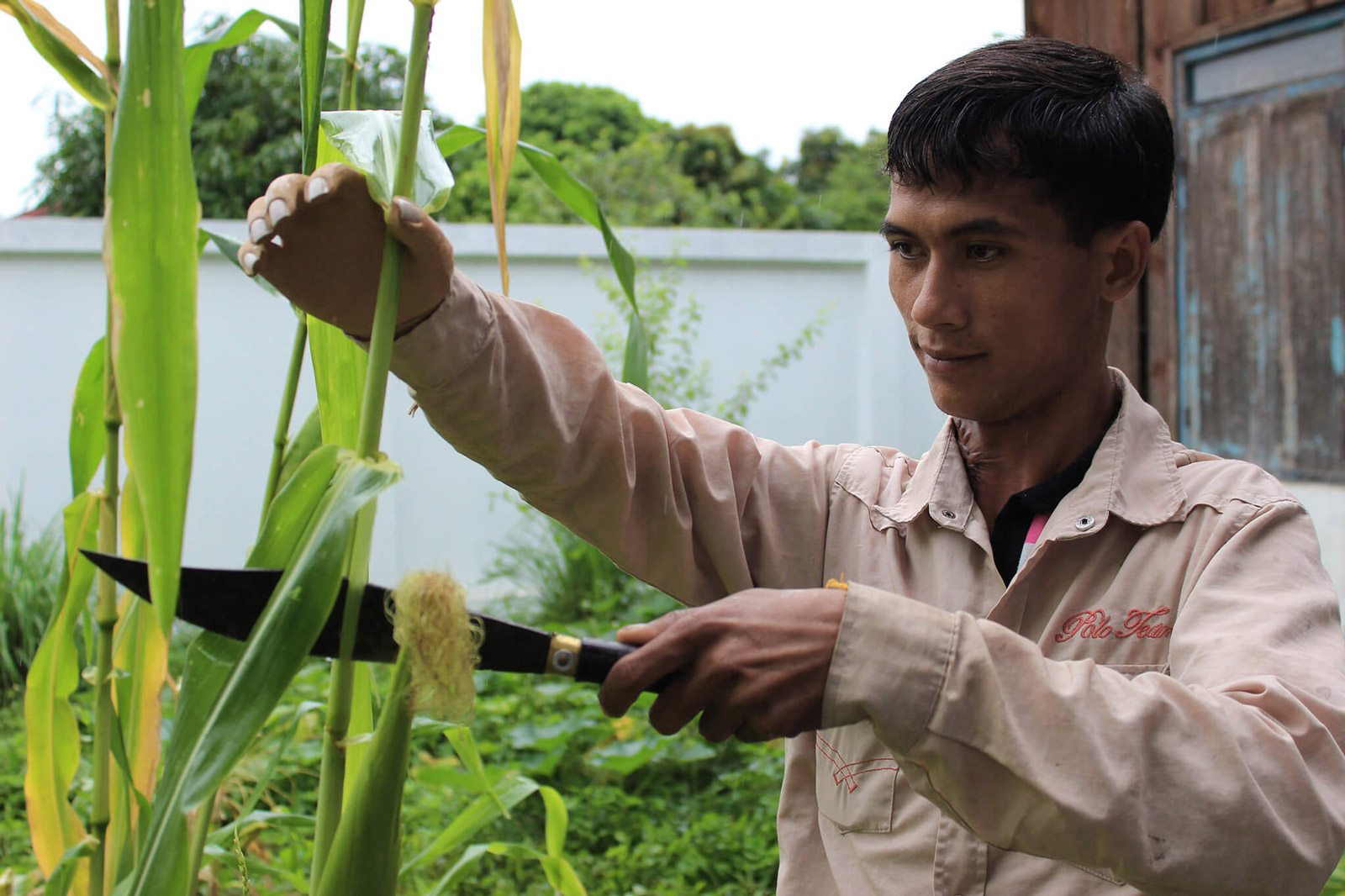
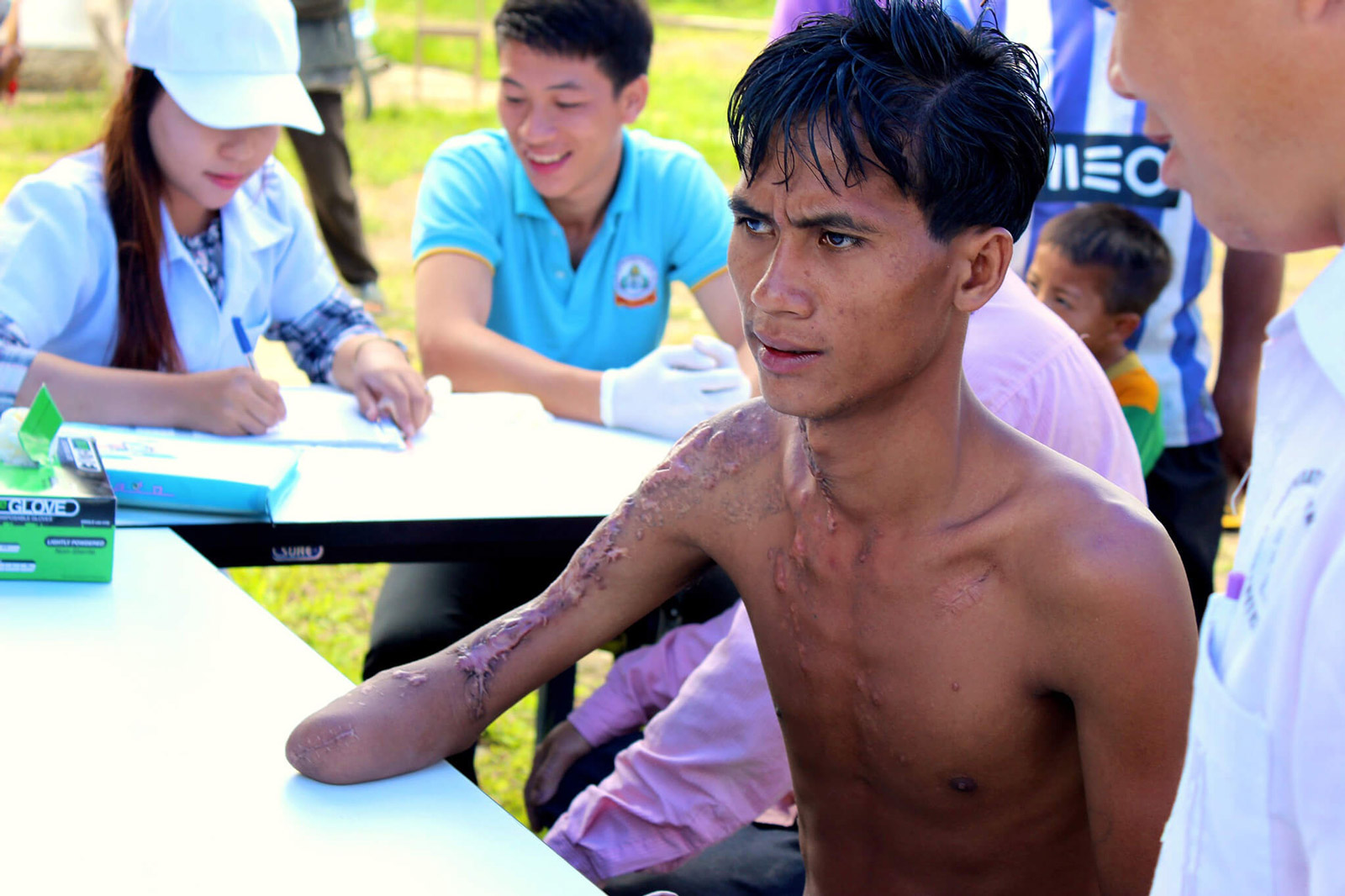
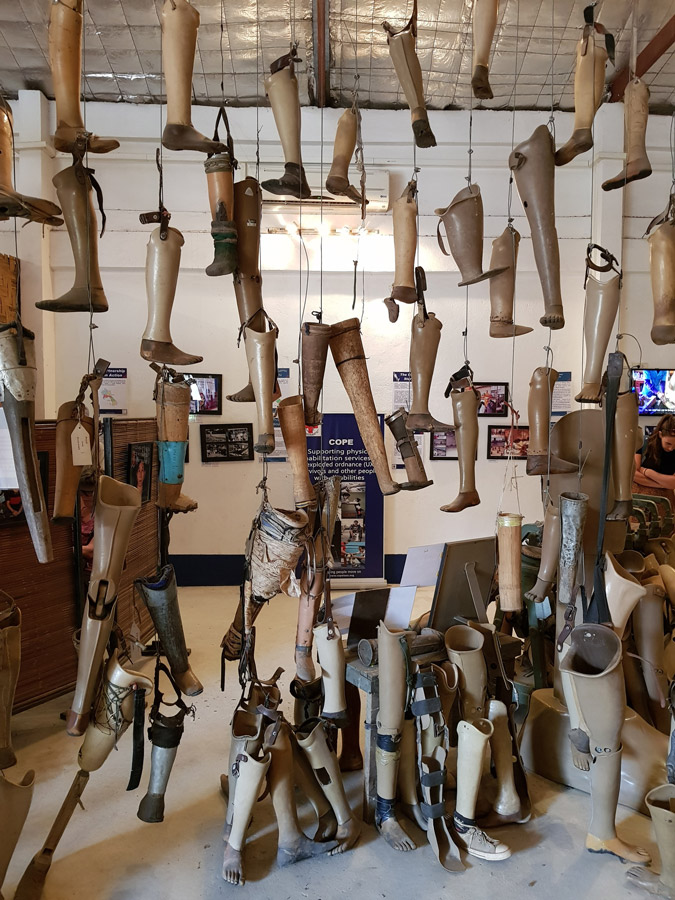
Clearance work, conducted by the Lao People’s Armed Forces, a national clearance operator and a network of international NGOs, has been underway since the 1990s. Over 1.4 million remnants of war have been destroyed, but that represents just 2% of the total.
Katherine Harrison, programme coordinator for Norwegian People’s Aid (NPA) – a demining group that has removed at least 68,000 explosive items since it began clearance activities in Laos more than a decade ago – told the Globe that ‘‘[local] estimates of the remaining contamination are indicative of areas where the risk is higher’’.
She added that aside from Xieng Khouang and Savannakhet, which bore the brunt of the bombing, Laos’ four southernmost provinces of Attapeu, Champassak, Saravane and Sekong ‘‘are all heavily contaminated due to the location of the Ho Chi Minh trail through the southern part of Laos’’. NPA has deployed its own survey and clearance staff in those provinces since 2009, having provided technical assistance since 1997 to the national clearance operator, UXO-Lao.
Contact with unexploded ordnance is usually unintentional. Accidents continue to occur despite public awareness campaigns, each year adding to the 12,000 explosions that have taken place since the US air raids concluded in 1973. Activities central to human existence can even be high risk. Ploughing land to cultivate crops, digging to facilitate construction and lighting fires for open-air cooking all bring the danger of sparking a dormant bomb back to life. Children have also mistaken war remnants for toys.
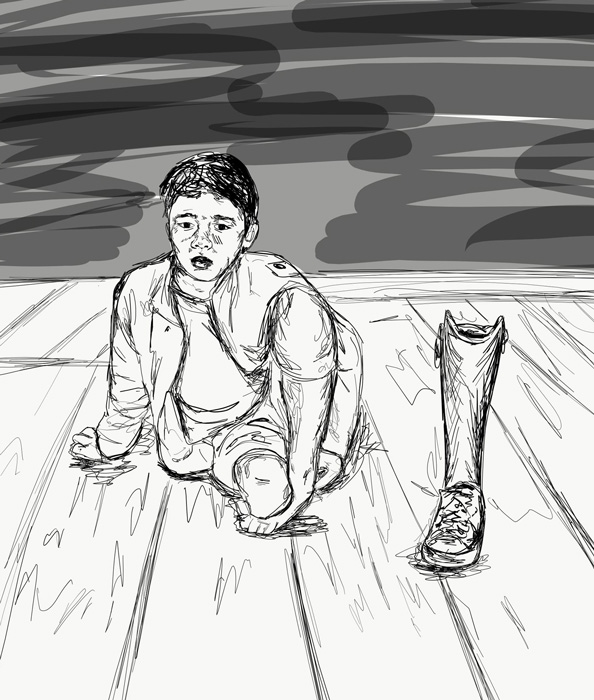
The price of scrap has risen over the last 15 years as regional demand for construction materials has grown, meaning the scrap trade in heavily-bombed areas has been fed by an expanding number of smelting mills and foundries along the Vietnam border
Harrison says it is ‘‘difficult to generalise’’ when forecasting who among the civilian population faces the greatest threat, ‘‘as individuals and communities may, out of socio-economic need, interact [with unexploded ordnance] in different ways in contaminated areas with differing levels of risk’’.
Laos’ scrap metal trade also encourages risk-taking with UXO.
The price of scrap has risen over the last 15 years as regional demand for construction materials has grown, meaning the scrap trade in heavily-bombed areas has been fed by an expanding number of smelting mills and foundries along the Vietnam border. Poor, rural communities, with limited access to cash, have greater incentive to hunt for scrap as, using a metal detector, large finds can bring a quick financial return. Yet digging to investigate signals is risky, with some even attempting to defuse or dismantle ordnance to sell its components, risking a deadly explosion.
In the event of a blast, about 200 metal fragments inflict devastating wounds to those at the site. The shockwaves from the explosion, and shrapnel penetrating the body, causes horrific injuries like blindness, hearing loss, and the loss of limbs. Most accidents occur in rural areas and on mountainous terrain, meaning immediate medical help is often unavailable, resulting in severe blood loss and infections of untreated wounds being a major causes of death.
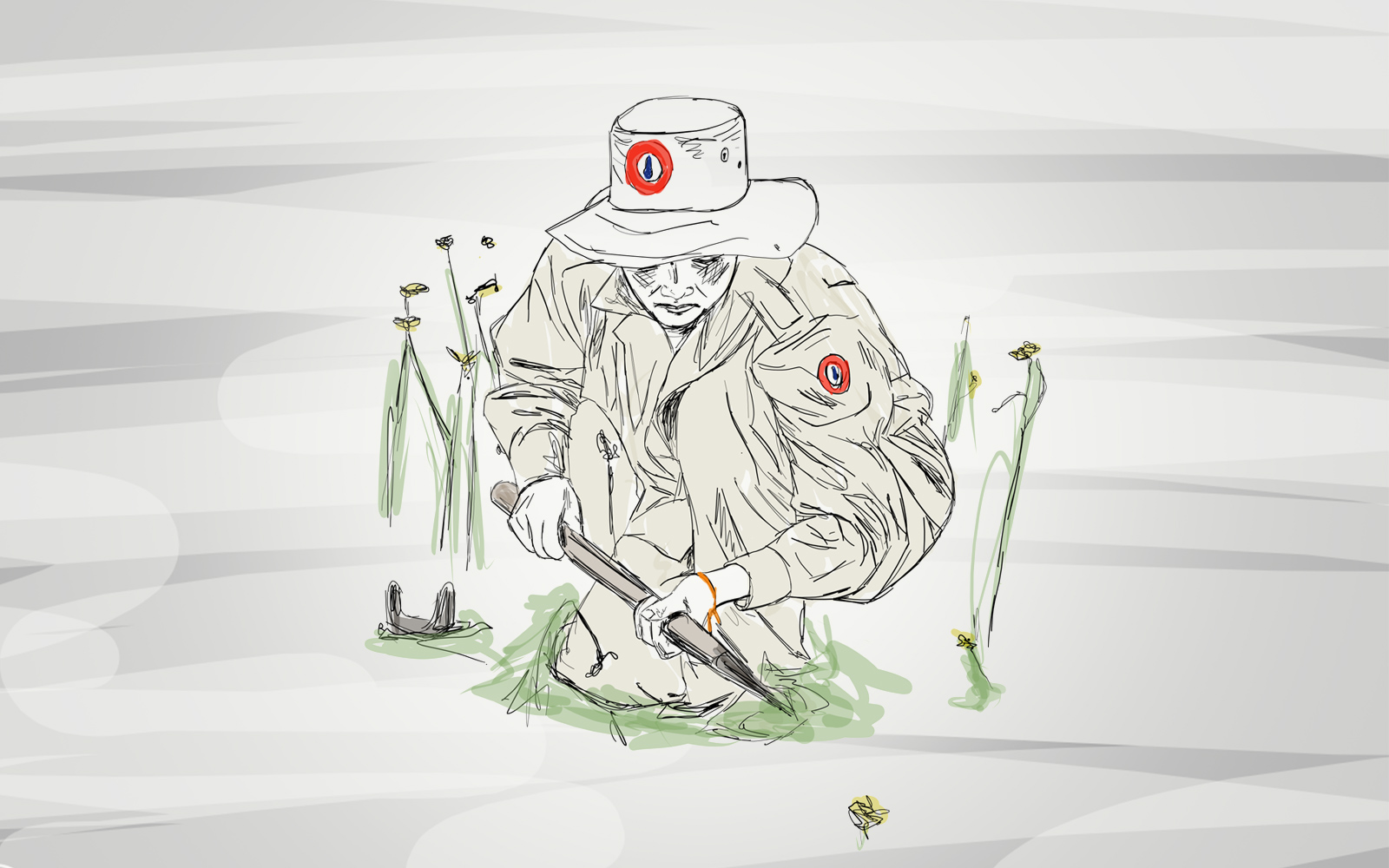
In addition to the facility in Xieng Khouang that treated Mr Mai, COPE, along with the government-run Centre for Medical Rehabilitation (CMR), runs another four rehabilitation centres across the country.
Supported by international donors and fundraising, all medical costs are covered, along with transport and food for victims and family members. Paphavady, who oversees the COPE-CMR visitor centre and supports their outreach from Vientiane, says amputee survivors are thankful for the chance to fulfil a “big dream; to have a chance to come back to walk again” when receiving a new limb for the first time.
While prosthetics manufactured in previous decades were made of leather, resin and aluminium, technicians now make use of polypropylene technology to ensure a more comfortable fit; essential to relieve pain and prevent pressure sores from developing.
Each prosthetic device is made-to-measure. Technicians forge an exact replica of the patient’s residual stump, before heating sheets of polypropylene to make the socket. Minor adjustments are then made by hand, according to the requirements of each patient.
Survivors of explosions are also in need of orthotics; small assistive devices which help support an injured body part and make it easier to carry-out daily tasks. Specially-designed fittings to hold a toothbrush, or cutlery, can make a huge difference in allowing survivors to live independently.
Most patients later need to attend physical and occupational therapy sessions; while their prosthetics and assistive devices need to be replaced after, at most, seven years – or every six months for children.
Amputees sometimes experience phantom pain, a sensation that occurs when nerve endings that used to serve the absent limb send signals to the brain.
Patients have reported feeling uncomfortable pain, itching and cramps. To alleviate this, patients use a mirror box. By sitting down at a table and placing an arm into the box, a mirror down the centre fools the brain into thinking the reflection is the missing arm. Moving, massaging or scratching the arm, with practice and in time, can help relieve symptoms.

The therapy was invented by Indian-American neuroscientist, Prof. Vilayanur S. Ramachandran, in the late-1990s, and has been adopted widely in Laos by survivors of bomb blasts. The therapy can also be used for leg amputees.
Canadian Stephen Sumner, himself an above-the-knee amputee following a motorbike accident in Italy 15 years ago, has gone to great lengths to enable wider access to reflection therapy in Southeast Asia’s former conflict zones. Over several years, Sumner travelled Cambodia and Laos by bicycle, distributing mirrors to amputees and teaching recipients how to use them effectively.
But the challenges facing blast survivors are, of course, not only limited to physical mobility.
Each accident has reverberating social and economic impacts on the victim and their family. Farmers make up a high proportion of those involved in incidents, and their inability to work as productively as they once did, leads to a loss of income. Immediate family members, often wives, are forced to take-on the bread-winning role of their husband, while the children drop-out of school early to become full-time carers.
Assistance for victims of US bombs in Laos has greatly improved since the early post-war years. The uncomfortable, home-fashioned artificial limbs of previous decades have now been replaced, in most cases, with prosthetics made using the latest technology, and available for next to no cost to survivors.
Some of the improvised legs, still a symbol of pride for their wearers, are now on display in Vientiane. The prosthesis of one veteran survivor, who lost his left leg in 1972 and carved his first artificial limb from a single piece of wood, has been as far as Oslo and New York to advocate for a cluster bomb ban.
Prosthetics help give independence back to their recipients, but there is concern that despite the huge progress made, such life-changing support has not reached everyone.
Paphavady from COPE says the outreach project and mobile clinics hope to expand access to survivors throughout the country, some of whom may not know the service is available.
Paphavady also says continued funding of the project, and the ability to continue training technical staff, is crucial for victims to be able to access the support they need. The outreach programme, which also involves distributing leaflets to villagers, will be key as in some areas a lack of infrastructure and fear of the unknown may prevent victims travelling for help.
Sadly, there will be more victims, with the explosive legacy of the US bombing embedded in the soil. At the annual meeting in February of the government-led National Regulatory Authority, which oversees the de-mining sector, officials set a target to clear 10,000 hectares of land of ordnance this year. Yet up to 8.7 million hectares are still contaminated, emphasising the huge scale of the task ahead.
While deadly remnants of war are set to remain for generations, the resilience of those who have survived them is a mark of Laos’ efforts to move on from a time when it was the most bombed nation on earth.


